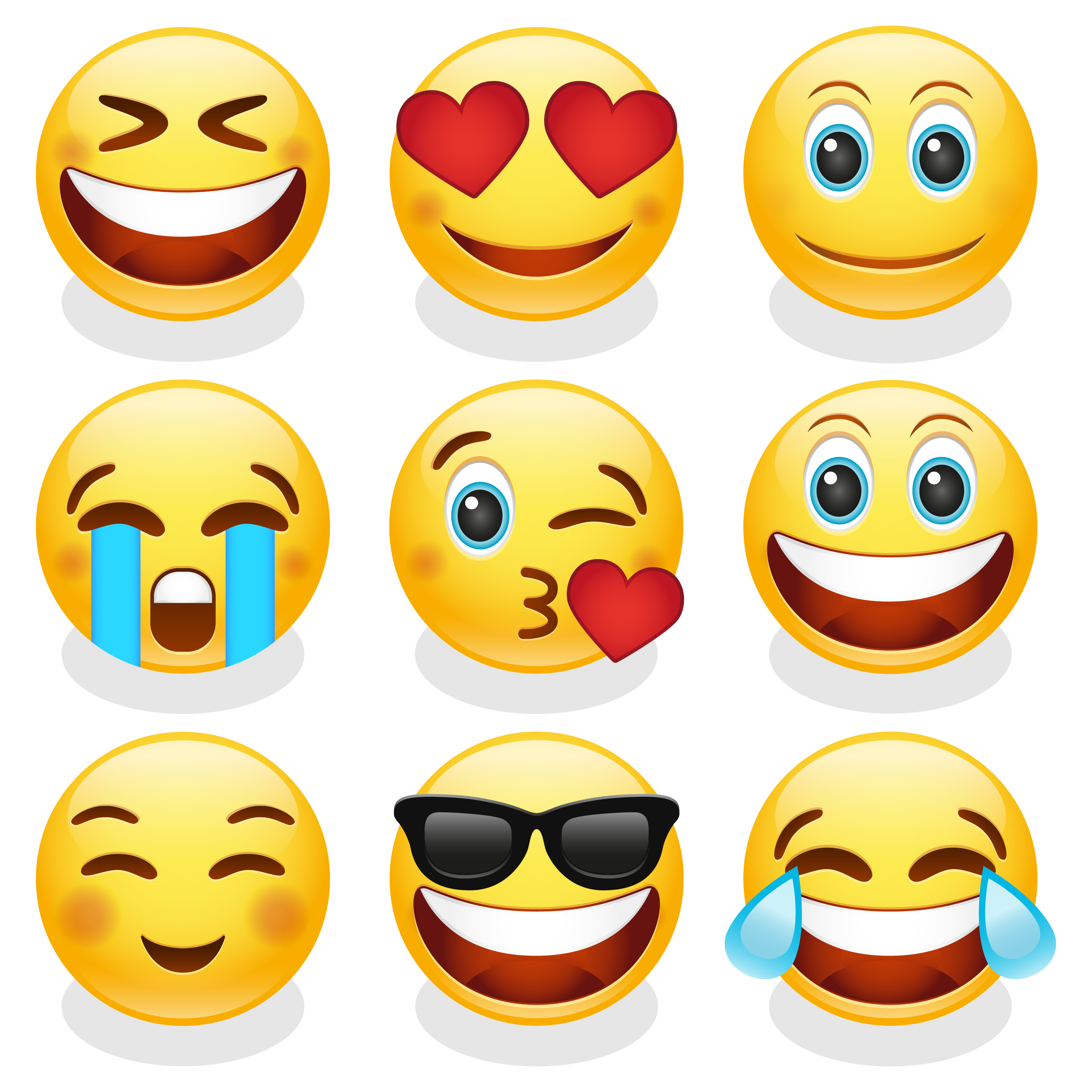Emoji << ee MOH jee >> is a simple image or symbol used to express an idea or emotion in digital communication. The term emoji is both singular and plural. Emoji are often small. An emoji may depict (show) a face, an animal, an everyday object, a place, a nation’s flag, or even an element of weather. Emoji can be used on computers , smartphones, and tablets. They are used in emails , social media posts, text messages , and even published works. The word emoji comes from Japanese words meaning picture and character. A character is a letter or other symbol used in a writing system.

Each emoji has a standard name. Examples of commonly used emoji include thumbs up, smiling face, face blowing a kiss, and loudly crying face.
The first set of emoji included 176 different characters. There are now thousands of emoji, with new emoji being created all the time.
Use.
Emoji are used in many ways. They are popular in text messages, emails, and social media posts. In such items, emoji can help to express a thought using few or no words. Emoji may be used alone or may accompany text, pictures, and video.
Many emoji have common uses. Instead of typing the word okay, for example, a person can use the OK hand emoji or the thumbs up emoji to express approval. Emoji can be combined to suggest new meanings. For example, a sandwich emoji paired with a cookie emoji could represent a meal with dessert. An airplane emoji combined with a luggage emoji could signify travel.
Emoji are frequently used to provide emotional context—that is, additional information about how the person using the emoji feels. For example, the popular emoji smiling face with smiling eyes is often used to express happiness. The red heart emoji is used to represent love. When paired with a written statement, emoji may indicate how the user feels about the statement. For example, the crying face emoji may suggest that the statement makes the user sad. The face with tears of joy emoji can show that a statement is meant to be humorous.
Emoji may help speakers of different languages to communicate with one another. Emoji are not considered a language, however, because the symbols have no settled meaning or system of grammar.
Standards.
A group called the Unicode Consortium maintains a standard set of emoji. The consortium was created to help standardize (make regular) the way characters are handled by computers. It works to ensure that emoji appear consistent (similar) across smartphones, computers, and other platforms. Some of the world’s largest computer and Internet companies are members of the consortium, along with numerous other companies and national governments.
The Unicode Consortium expands the standard set of emoji by adding widely used images or symbols. The consortium does not assign a specific meaning to new emoji, as the images can be interpreted differently in various cultures or contexts. Proposals for new emoji must be submitted along with a full design. New emoji are subject to certain restrictions. For example, they cannot depict religious figures, commercial logos, or specific people. Since the early 2010’s, the consortium has worked to make emoji more inclusive. They have added a greater variety of skin tones and hair colors to emoji that depict people and more diverse representations of gender, sexual orientation, and disability.
History.
Emoji may trace their roots to the emoticons first used in the 1970’s. Emoticons are small images made by combining standard keyboard characters. Such simple emoticons as the smiling face ” 🙂 ” and frowning face ” 🙁 ” have long been used to express basic emotions in typed messages.
The Japanese telecommunications company NTT DoCoMo introduced the first emoji in 1995. At the time, text and pager messages could only include a relatively small number of characters. The Japanese designer Shigetaka Kurita developed a solution to help express more information under such limitations. He created a set of simple images that were 12 pixels (picture elements) tall and 12 pixels wide. The first emoji depicted simple subjects, including the sun and rain. Emoji became available on cell phones in 1999, when NTT DoCoMo introduced Japan’s first mobile Internet service.
Throughout the early 2000’s, emoji spread to various Internet and telecommunications services. By 2010, emoji had become so popular that the Unicode Consortium added them to its list of standard character sets. In 2011, the computer company Apple Inc. introduced emoji to their operating system. In 2013, the Android mobile operating system introduced them as well.
Emoji have inspired and appeared in many works of art. In 2009, for example, the American artist Fred Benenson published Emoji Dick, a version of Herman Melville’s classic novel Moby-Dick (1851) written entirely in emoji. The Emoji Movie (2017) was an animated motion picture featuring various emoji as characters. In 2016, the Museum of Modern Art in New York City acquired Kurita’s original set of 176 emoji.
